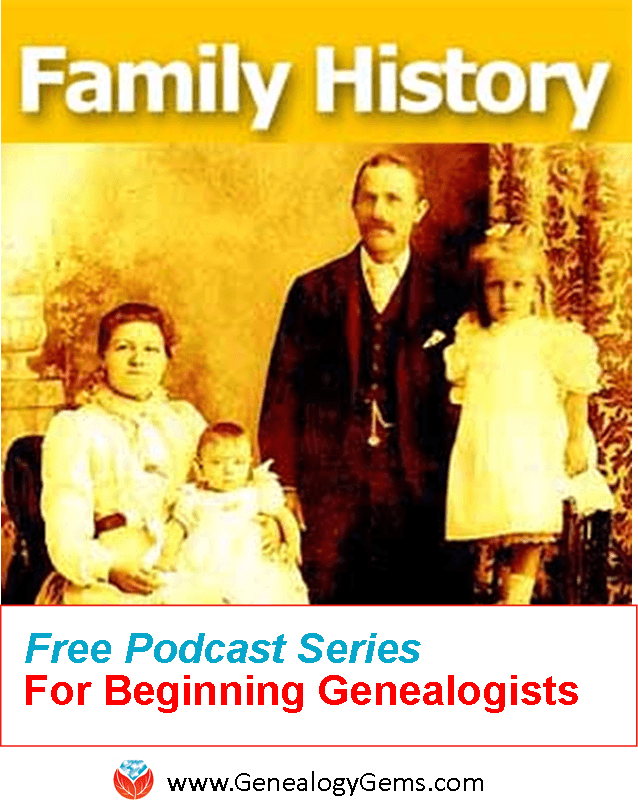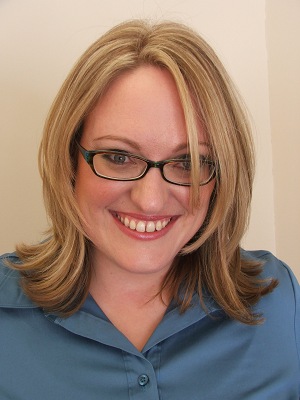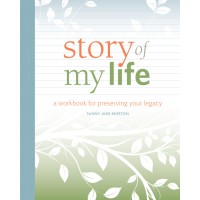Special Episode: The End of FamilySearch Microfilm Lending Program
Change is something we can always count on, but that doesn’t make it any easier, does it? Understanding why the change is happening, how it affects you personally, and what you can do to adapt, does. So, when FamilySearch announced the end of their long-standing microfilm lending program, I immediately sought out the key expert who can answer these questions for you.
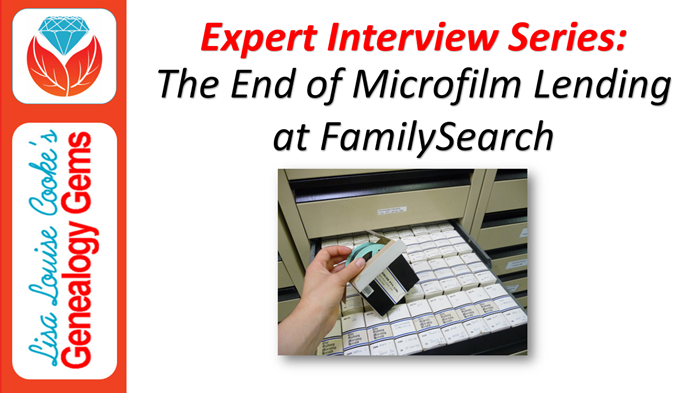
FamilySearch’s Goal for Microfilm and the Family History Library
It seems like only yesterday I was interviewing Don R. Anderson, Director of the Family History Library about the future of the library and FamilySearch. Back then, in 2009, he made the startling statement that their goal was to digitize all of the microfilms in FamilySearch’s granite vault. (Click here to listen to that interview in my Family History: Genealogy Made Easy podcast episode 16.) Fast forward to today, and we see that in less than ten years that end goal is within sight. We are also seeing the ending of a service nearly every genealogist has tapped into at some point: the microfilm lending program. Family historians have been able to place orders for microfilm to be shipped to their local Family History Center where they could then scroll through the images in search of ancestors.
On August 31, 2017, this service comes to an end.
Fear of the Unknown
It’s sort of scary to see this come to an end before every last roll of microfilm has been digitized and put online (just head to social media to read some of the concerns). It’s definitely been comforting to know that the records you need are just an order form and two weeks away.
I have always found that being armed with information helps alleviate fear, and so upon hearing the news, I reached out to FamilySearch to arrange a special interview with Diane Loosle, Director of Patron Services at FamilySearch. In this special Genealogy Gems Podcast interview, we take the time to really comb through what the end of the microfilm lending program means for you, and what your options are for records access going forward. I’ve been anxious to get this information into your ears and hands, and have spent the entire weekend producing this episode and transcribing it for you.
The Interview: The End of the FamilySearch Microfilm Lending Program
Lisa: One of the constant challenges for genealogists is gaining access to genealogical records that they need for their particular family history research. I imagine that you’ve had that challenge yourself. Thankfully, since 1938 the FamilySearch organization has been microfilming records around the world. They’ve been making these records available through the Family History Library in Salt Lake City, and through a tremendous lending program with their Family History Centers located worldwide. And that may be where you’ve gotten your hands on a couple of microfilms and records over the years. But of course, as the Internet has been more accessible over the last two decades, this is changing the landscape of record access. So more and more we are gaining access to digitized records online, and this has led to a really big change in the long-standing microfilm lending program.

I’ve invited Diane Loosle, the Director of Patron Services Division at FamilySearch, to talk about the change that’s occurred, what it means for you, and what your record access options are going to be going forward. Diane, thanks so much for joining me today.
Diane: I’m so happy I could come, and thank you for inviting me.
The Reasons Microfilm Lending is Coming to an End
Lisa: I imagine that you’ve been very busy with the changes. I know that the last day of the microfilm ordering was August 31, 2017. And you know FamilySearch has been digitizing records for years, so we are going to be shifting from microfilm to digitization. Why is right now the time that the change is happening, where you’re actually discontinuing the physical microfilm lending?
Diane: This is such an exciting time Lisa. We’ve been looking forward to this day for many, many years because when you think about the fact that you can get access to these images immediately in your home, for the most part – there are some that you have to access through a center or library, but the majority are in your home – that’s pretty wonderful. And so we are moving to a place where all of our fulfillment for your needs for your records is going to be digital and that’s what this change is all about.
So the reason that it’s happening now is that, a couple of different reasons. First, we have moved through a lot of the microfilm and have had those digitized and they are up online. So it was a good point with that.
We’ve also seen a huge drop in the orders of microfilms. So there’s not very many being ordered now, so that kind of lined up.
And then also our supplier. We have a single supplier for vesicular microfilm, and I think that’s important to understand that we’re talking about a certain type of microfilm because we use that type to make the copies and send them out to you. We have a single supplier, and that supplier has been kind of raising prices and giving us the indication that they would rather not be in that business. And so with all those things together, and the fact that we would like to take the resources that we are currently using to duplicate films, and send them out, and ship them and all of that, we’d like to take those resources and move them towards bringing you more records digitally.
It seemed like the right time to make this decision to finally finish it. Now we do have some of the collection that has not been completed of course, and I think that’s what’s causing most people concern is, “What happens? Can I get access to that during this time that you are still finishing it off?”
Lisa: Exactly, and you know I have visited the distribution center for your lending program, and it was massive and it looked really complicated. And then when you add on the idea that the access to the actual film itself is changing.
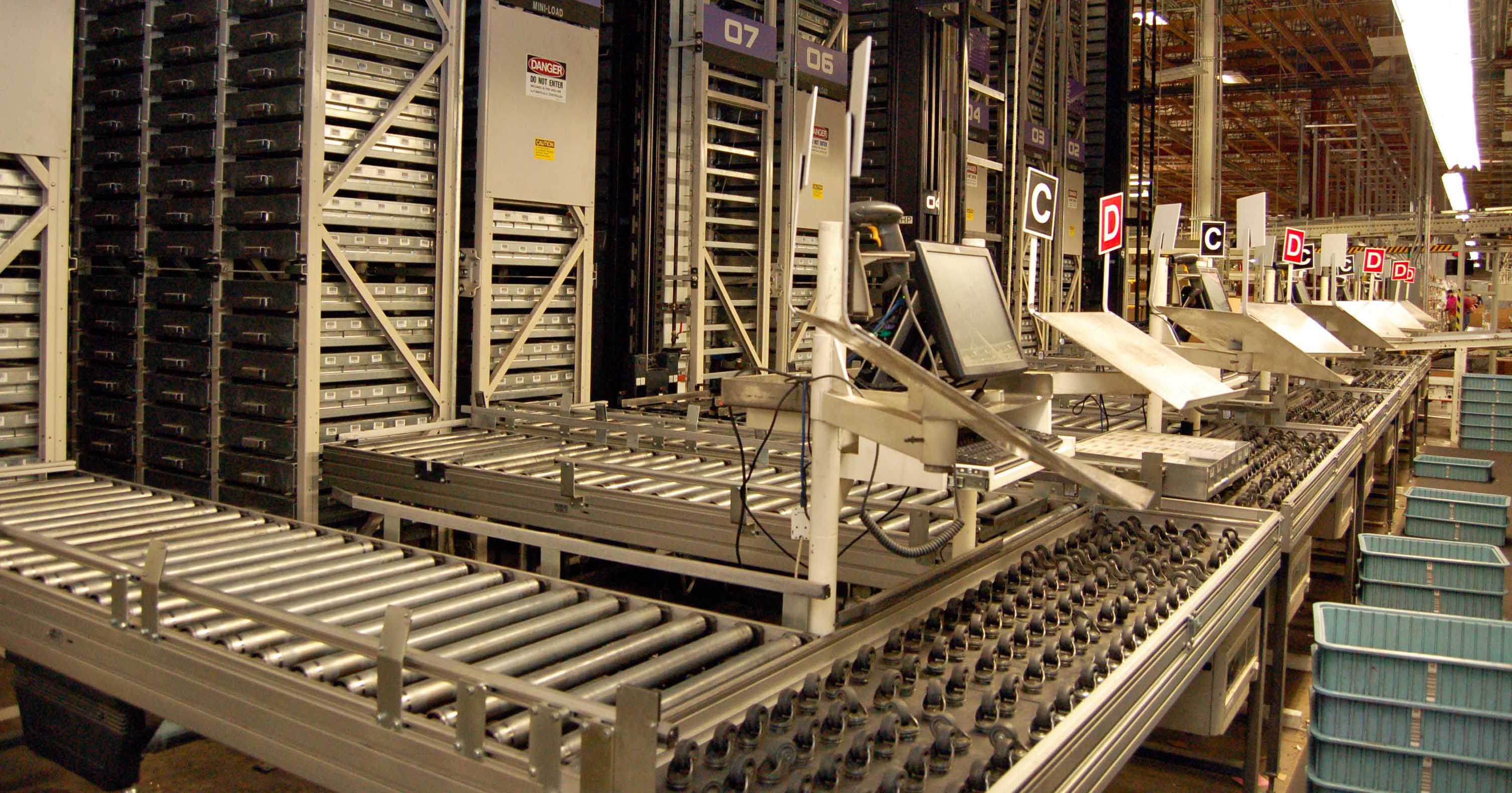
I just got a camera from my uncle, and it’s got 25-year-old film in it. It took me all day to find a local store that could develop it for me!
So, it’s like a perfect storm of a lot of technological changes, which is exciting, because as you said we can access things from home.
Digitization and Publishing Limitations
I know that when it comes to the microfilm that you guys have, the goal has been to digitize all of it. But explain to folks what the limitations are in terms of, do you have the rights to lend it, do you have the rights to digitize and put up online everything that you have microfilmed?
Diane: Right. So we are always limited by the rights associated with the collections because the record custodians stipulate those when we do the agreements. And in microfilm, we’ve been circulating things. Our intention is to circulate digitally everything possible legally for us to do. And that’s the majority of the collection.
Now in the process of doing this, what’s happened over the years is that laws have changed around Data Privacy, particularly in Europe and some other locations around the world. And as we’re going through and reviewing all of these, you can imagine these thousands of contracts for this process, we’re discovering that there are some that because of the changes in the Data Privacy laws, they really should not have been continuing to circulate because of those changes.
So those would then in the future be restricted because of the Data Privacy issues. And those are usually very modern records, those that have living people in them.
So there will be a set of records that maybe you could have gotten on microfilm previously that you would not now be able to get digitally. But that’s because they shouldn’t have been in circulation anyway because of the data privacy changes. But for the most part, what we’re circulating microfilm-wise you will have access to digitally.
Now, about 20% of the collection you have to access through the Family History Library, or through a Family History Center or affiliate library because of the contracts we have. And that was also true with the microfilm of course, and now it’s true with the digital images as well, based on the contracts, so there will be a certain set that is in that category.
Family History Center Affiliates
Lisa: Help us understand what affiliate centers are.
Diane: Affiliates don’t have to return the film they have. Affiliates are usually public libraries or Family History Centers in an LDS chapel. Local leadership will decide. So if they keep them, you can still access them. And the Family History Library in Salt Lake City will maintain a large microfilm collection as well. Go to familysearch.org and in the right corner, you’ll find the Get Help link (and click Contact Us). Search by zip code for affiliates near you. They will appear on a map. Libraries have extended hours compared to Family History Centers.

The best way to find out where the films are still located, both physical and digital, is the FamilySearch Card Catalog. Many people aren’t that familiar with the card catalog. Look for the Camera icon, then click to go to the document image.
![]()
Lisa: Let’s dig into that a little bit. So we’re talking about, you mentioned the term “affiliate centers” and I know that there are some locations which aren’t technically affiliates. Can you help define that for us? How do we figure out, before we make the jaunt over to the local family history center if that’s one that actually can still have some of the microfilm. Help us sort that out.
Diane: So if you go to any center or affiliate library out there, and I’ll tell you how to find those in just a minutes, they can keep whatever film they already have on hand. There’s nothing that’s saying that they need to send it back. Now that is dependent on decisions made at the local level. So, you know, the leadership of either the affiliate library, which is normally in a public library, or a family history center which is often in an LDS chapel, the local leadership there will make a decision about, you know, the film and what happens to them in the future, but we’re not asking them to send them back. So you’ll still be able to access them. And the library here in Salt Lake will maintain a large microfilm collection as well. So, it will still be available that way.
Now the way that you find these locations is if you go into FamilySearch, up in the right-hand corner there’s a Get Help link, and the Get Help link lets you get in touch with us. And then you can search actually using your zip code to find which centers and affiliate libraries are near you, and both will appear on the map that appears. So, uhm, you can find out which ones are near your location.
The affiliates are, as I said, often public libraries, so they may have extended hours beyond what the family history center might have because the family history center is often as I said in a chapel and manned by volunteers. And so they may not have as many hours as your affiliate libraries may have.
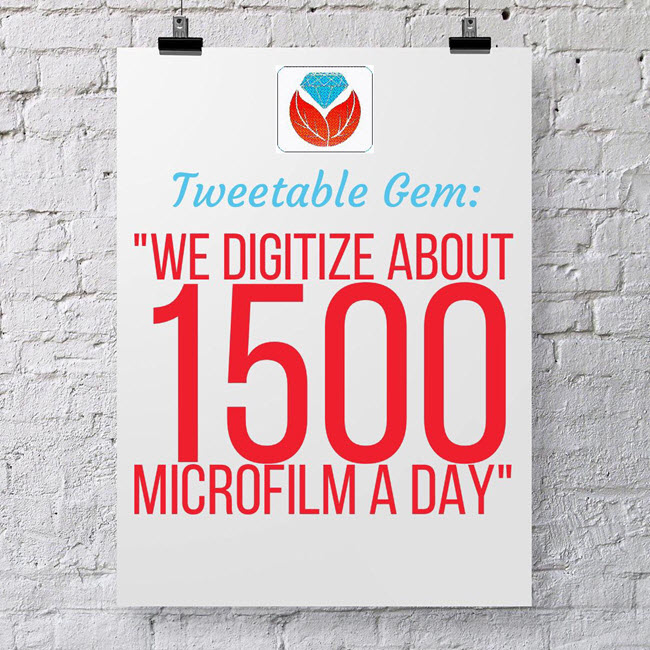
How to Identify Where the Films are Located
Lisa: So whatever they may have had on hand when the lending program came to an end, they had the option to decide if they were going to hang onto it, or if they were going to send stuff back. There’s going to be some just at the Family History Library in Salt Lake City. Do we go into the card catalog to identify where the existing films are still located?
Diane: Yes, so the best way to find out what’s available both digitally and where the films might be physically located is through the FamilySearch Catalog on familysearch.org. So if you go to Search on FamilySearch, and then Catalog, you can look up your location, look up the records your interested in, and it will tell you where those can be found.

Now, if it’s available digitally, and actually most people I’ve talked to where they would have this concern about “oh goodness, I’m not going to have access to my films!”, when I’ve talked with them, and we’ve looked them up, their records were already available digitally, they just didn’t know it. So, if you go in the catalog and look it up where it lists the microfilm, there will be a little camera icon out to the right-hand side, and if you see that little camera icon, you can click on that and that takes you straight in to the digital images for that record.
Now we publish those, we do about digitize about 1,500 microfilms a day at the vault. And we publish those pretty immediately up on to the website through the catalog. You will not find those through the Historical Records part of FamilySearch under Search Records. They’re just through the catalog, so there’s a much larger collection available through the catalog than what you see in the Historical Records section.
How Films are Prioritized for Digitization
Lisa: When we get notifications, I know I get your press releases and such on the new records that are coming out, does that include those? Because we do publish every Friday kind of a run down for all of our listeners out there, what the newest records are that are coming online.
Diane: It does not currently. That publication only includes things that are published online in the Historical Records section of the website. However, with this change, we’re looking to change that so it will include those being published to the catalog. Now the challenge with that is the volume! Because 1,500 films a day is a lot.
And these films, because the way that we did this initially, we prioritized all of the films that had been ordered in the last five years to make sure that those were available digitally, so it’s been kind of piecemeal a little bit.
So, you might have two or three films in a full collection that have been digitized and the rest maybe not, at this point, and so trying to help you understand what is and is not available through that publication. We’re still working through the details. But the intention is, as we go forward, will be to prioritize filling in those collections where maybe one or two films have been digitized and the rest have not yet. We will go through and make sure the whole collection has been digitized. And then we are going to introduce a process where you will be able to let us know if there is a film that you absolutely need. You can let us know, and we will work that into our prioritization and try to get that to you as quickly as we can. You know if you think about how long it took to get a microfilm to be delivered to you once you ordered it, you can think about it’s kind of the same time frame when it might then be available to you digitally.
How to Request that a Microfilm be Digitized
Lisa: How could they be contacting you to make that kind of request?
Diane: We are working on that process right now, trying to finalize it. So there’s kind of two options we’re looking at at the moment: One, you would contact us through our support line, the Help Line. The other is that we would just have a form up that you would fill out. Now the form is going to take more time to get established and up. So we may go out of the gate with not as ideal of a process, but we want to make sure that we can let us know, so we’ll be clear about what that is as we get closer to September 1st.
Lisa: When we get into the catalog, have you already flagged which ones are going to have restrictions, they are just not going to be able to be digitized? Because I think some people might be thinking “Maybe I should just hold on and wait, over the next couple months maybe they’ll get to this one, I’ll put in a request.” But I imagine that’s going to be a big job if you have to go in and try to flag every single one that you know you’re not going to have the rights to digitize. Tell us how you’re going to deal with that.
Diane: Well, that has not occurred and would be pretty impossible to do at this stage, just because of the volume of what we’re dealing with trying to go through. We’re doing it as we go to digitize the films. And so, we discover it as we go, as opposed to knowing it ahead of time.
Lisa: So if they put in a request, you pull it out, go ‘OK well let’s look at doing this,’ and then realize, no, this one’s not going to be able to do it. Then at least they would get that information?
Diane: Yes, they would. Well, what would happen is we’re working on a way so that in the catalog you would be able to identify that. So for example, a request actually came from the community out there that we be able to distinguish if a record can be viewed in my home, or if I have to be at the facility to view it, or if there is some other restriction on it. And so, because of that feedback, we thought “So let’s see if we can figure out a way to help people understand that.” Now, these things probably won’t be ready right out of the gate. But we’re looking for ways to make it simpler for you to understand what the challenges are with the record that you’re trying to access.
Gaining Access to Microfilm and Some Restricted Digitized Records in Person
Lisa: Sure. So, if we’re looking online and we see a record, and it’s not been digitized yet, would we at this point, until you get more formalized processes going, would you still encourage people to get in touch with the Family History Library in Salt Lake City? What other options are they going to have to gain access?
Diane: So first what I would do is I would look, because we’ll maintain the film inventory, so we know where the films are located, so I would first look and see, is this film available somewhere near me? Or if I have an opportunity to come to the Family History Library, and the film is there, great. But, so first look and see if you can locate it, then you can let us know through the channels that we’ll have available to you what the film is, and then we’ll put it into the list to be prioritized to be digitized. But I would always encourage folks to look and see if they are located near where that film already is because that would be much quicker for them to get access to that.
Lisa: If Salt Lake City is the only place, then, of course, this really whittles down to the big fear of everybody, is “Oh that one film I’m going to need, it’s only going to be in Salt Lake City and I can’t get there.” What other kinds of options might a person like that have?
Diane: Well, so I think that there are some options available to them because we have a large group of professional researchers who come to the library every day, and those folks could probably be useful to you in looking up those records and getting copies of whatever is needed. So that’s one option that people could take to do that.
The majority of what we’ll have, I don’t think the case would be that the only place you can get it is the Family History Library. If we do have a fair number of collections that are in that category as we finish this process off, then we’ll look at ways to provide some access where we can. But that access would probably be in a digital way as well. So that would be my suggestion, that they reach out to those who are here every day and could take a look at that. And I think you know there are other websites where you can get access to professionals as well, or just good samaritans, you know, that want to help you out.
Lisa: Absolutely, and there are lots of those. Finally, are there any records that the people listening are going to completely lose access to?
Diane: The only ones that would be in that category is because of data privacy. So, if there was an issue with, you know, a law changed, that made it so that we could no longer provide access to those. But that would have been true in the microfilm world as well.
Lisa: Exactly. So really, it really doesn’t change in that respect. We’re not losing records, we’re changing up how we access them. And I think you’ve helped shed a lot of light on kind of what the process will be and it sounds like you have a big job ahead of you.
“We’re not losing records, we’re changing up how we access them.” Lisa Louise Cooke
Shifting Resources to Meet the Goal
Lisa: How quickly do you think it’s going to help once the lending process is let go of, that the resources start going to all of this other work now that you have to do on the digital side?
Diane: I think it will move pretty quickly for us to, you know, start to do more with the resources we have. For example, we’re collecting around three million images with three hundred camera crews out there, about a week. So, that’s a lot! And we want to shift a lot of resources. Another place we’d like to capture more is with Africa and the oral genealogies project that we have, and gain more access there. So, we’ll be shifting to those. And then, of course, the vault is moving at a pretty good clip already, with about 1,500 films a day, so I think we’ll be able to keep up pretty well with the demand that’s coming at us from people. But, we’ll evaluate that as we go, and determine if we need to boost up more there or not, to be able to move more quickly for folks.
Empowering Genealogists to Learn More
Lisa: Any other questions that I didn’t think about that you’ve been hearing online, in social media, that you’d love to give us some input on?
Diane: Well, we have had some questions from some of the affiliate libraries about how do they get the access? So that’s been happening online a little bit. And so we just want them to know that we’ll be reaching out to them via calling all of them actually, and helping them through this process of setting up the things that they need to technically to be able to get access to the images digitally. So that’s definitely something they should know.
The other thing is that we have a lot of people who don’t actually know how to use the catalog [laughs] because you know they’ve grown up in a search world, or looking at the historical records the browsable images, and a lot of people don’t understand that there’s a lot of different ways to access the records on FamilySearch. So you have Search, which is a very small percentage of the collection actually, compared to the whole, and then you have the Historical Records that are only browsable, and that you can go in and look at the images browsing, and then you have everything that’s been published through the catalog. So there’s kind of three places that they need to look. So I think that’s the biggest piece I’ve seen: people just don’t know. They’re not aware of where to find those things. And you know eventually, it will be nice, maybe when those things come together. But at this point in time, they’re separate. And that’s because we wanted to ensure that you would maintain access. If we could just publish them quickly and maintain access for you, that’s the best in our minds.
Lisa: Absolutely! Well, I know that Sunny Morton here at Genealogy Gems is going to be joining us in future episodes talking more about just those different areas. And I love the way that you kind of laid it out for us because I think a lot of people weren’t that familiar with the differences. And she’s going to be helping us get a little savvier in that ongoing research.
Diane, thank you so much for taking time to visit with me, and to answer some of the questions. I know that you know that the emotions that run high are only because people are so passionate about family history, and they are so appreciative of what FamilySearch has done. It’s been an amazing resource that you guys provide to the public for free, which is just absolutely invaluable. And I know that I have a lot of confidence in where you guys are going because you always are out there looking forward. How far out into the future you guys look and you plan for is just phenomenal! It’s not just about us accessing records, it’s going to be for generations to come, and I love the fact that you guys are really laying the groundwork for that.
Diane: Well, thank you, Lisa! We are all about getting you access to records so that you can find your ancestors, and we will always be about that. I’m glad that I could come and help people to understand what’s happening and hopefully be a little less concerned about the change. I know it’s difficult, but it’s a wonderful change too.
Lisa: Thanks again Diane!
Diana: Thank you, Lisa!
Check out this new episode!
Episode 197
 Episode 197
Episode 197
with Lisa Louise Cooke
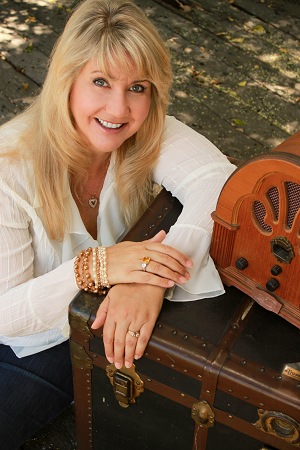
This episode celebrates the most recent family history there is: our own. A chat between host and producer Lisa Louise Cook and Gems editor Sunny Morton explores the meaning and memories behind heirlooms hanging in Lisa’s bedroom. They comment on the larger value, for self and others, of recording our own memories in honor of Sunny’s new book, Story of My Life: A Workbook for Preserving Your Legacy.
Also in this episode:
- A spotlight on new marriage records online for the U.S. and around the world.
- Lisa walks a listener through several tips for learning more about her immigrant ancestors (a mother and daughter). Lisa shows how to use today’s technology tools to help with traditional research skills such as locating passenger lists, immigrant society records and naturalization.
- Your DNA Guide Diahan Southard talks about organizing your DNA matches so you can get the most out of them.
- Genealogy Gems Book Club featured author and Victorian lifestyle expert Sarah Chrisman describes what it’s like in her home–which doesn’t use electricity–as the days grow shorter and the darkness comes earlier.
NEW RECORDS ONLINE: Marriage Records
New York City Marriages: a new index to more than 3 million marriage licenses for recent New York City marriages (1950-1995)
Free FamilySearch marriage record collections recently added or updated include:
- Arkansas Church Marriages, 1860-1976
- Nebraska, Box Butte County Marriages, 1887-2015
- Ohio, County Marriages, 1789-2013
- Tennessee, County Marriages, 1790-1950
- Washington, County Marriages for 1855-2008
- Washington, Marriage Records, 1854-2013
- California, County Marriages, 1850-1952
- New Zealand, Civil Records Indexes, 1800-1896
- Belgium, Antwerp, Civil Registration, 1588-1913; Belgium, East Flanders, Civil Registration, 1541-1914; Belgium, Liège, Civil Registration, 1621-1914; Belgium, Limburg, Civil Registration, 1798-1906
- Nicaragua Civil Registration, 1809-2013
- Russia, Tatarstan Church Books, 1721-1939
- Argentina, Cordoba, Catholic Church Records, 1557-1974
- Sweden, Gävleborg Church Records, 1616-1908; index 1671-1860
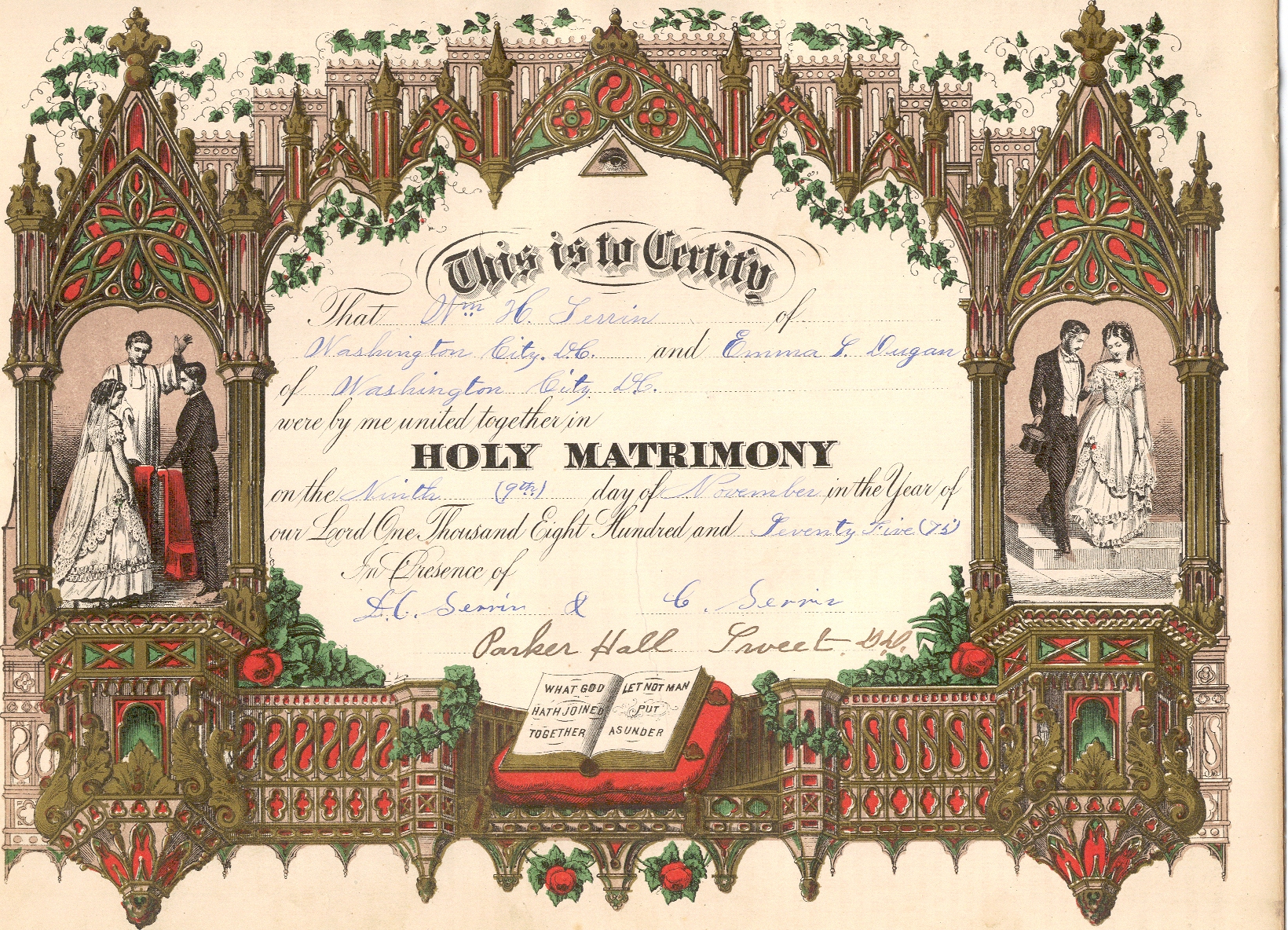
Learn more about marriage record research: Listen to Using Marriage Records in Family History: Episode 24 in Lisa Louise Cooke’s free step-by-step podcast, Genealogy: Family History Made Easy.
BONUS CONTENT for Genealogy Gems App Users: Finding Copies of Images Online with Google on Your Mobile Device
If you’re listening through the Genealogy Gems app, your bonus content for this episode is an exclusive step-by-step tutorial PDF that shows you how to use your mobile device and Google to locate copies of images online. Remember, the Genealogy Gems app is FREE in Google Play and is only $2.99 for Windows, iPhone and iPad users.
MAILBOX: Finding a Female Immigrant Ancestor
 Question from Jo: “I have been fortunate to find information about most of my great-grandparents. I have hit a wall with my maternal great grandmother who immigrated from Switzerland to the US in the 1880s when she was 8 years old. I was hoping that by upgrading to International records on Ancestry that I could find the ship and where she and her mother came from. The curious thing for me is that she and her mother traveled solo to the US and went to Cincinnati, Ohio. I’ve been to Cincinnati and have searched there and have found directories with addresses but no profession is listed like other people. I didn’t find any ship records either. Where might you suggest that I look or search to find more information?”
Question from Jo: “I have been fortunate to find information about most of my great-grandparents. I have hit a wall with my maternal great grandmother who immigrated from Switzerland to the US in the 1880s when she was 8 years old. I was hoping that by upgrading to International records on Ancestry that I could find the ship and where she and her mother came from. The curious thing for me is that she and her mother traveled solo to the US and went to Cincinnati, Ohio. I’ve been to Cincinnati and have searched there and have found directories with addresses but no profession is listed like other people. I didn’t find any ship records either. Where might you suggest that I look or search to find more information?”
Tips for searching passenger arrival lists:
Consider what ports would have been the most logical point of arrival for an immigrant ancestor based on the time period and the U.S. location in which you find them. Cincinnati, Ohio, was reachable by rail by the 1880s from major ports, as well as by water via the Mississippi River for southern ports, so that doesn’t narrow things down much. According to an Ancestry.com article, more than 80% of immigrants arrived at the Port of New York by the 1890s, so Jo might scrutinize those New York passenger arrival lists for the 1880s again.
Free New York City passenger arrival databases at
- Castlegarden.org
- Major U.S. Immigration Ports (Ancestry.com)
- New York, Passenger Lists, 1820-1957 (Ancestry.com)
- New York Passenger Lists, 1820-1891 (FamilySearch.org; New York City, NARA M237)
- New York Passenger Lists & Arrivals, 1846-1890
Search multiple NYC passenger lists simultaneously at Steve Morse’s One-Step web portal
For “deeper” searching at Ancestry.com or other sites with powerful, flexible search interfaces: do a “nameless search” (without any name) for girls around age 8 for arrivals in particular years. Try additional searches with various combinations of name, place of origin (Switzerland) or “Swiss” in the keyword field, which will bring up that word in the ethnicity or nationality column. That column doesn’t have its own search field in Ancestry.com but it is indexed, so use the keyword field to search it.
Research Swiss immigration to Cincinnati during that time period. Who was coming, why they were coming and where they were coming from? Click here for free tips about researching historical questions such as these.
The Swiss in the United States at Internet Archive
Swiss-American Historical Society and Swiss Center: Genealogy
Tips for researching records of immigrant societies:
In the U.S., the time between an immigrant’s arrival and naturalization is often documented in records of ethnic organizations such as fraternal benefit societies, immigrant aid and colonization societies. These kinds of community groups often existed in cities and towns where specific immigrant groups had a strong presence.
- Germans in Hamilton County, Ohio (FamilySearch wiki)
- Finding aid for the Swiss Benevolent Association (Cincinnati, Ohio) records, 1871-2011
- Swiss Benevolent Association, Cincinnati, OH
- Cincinnati Library’s Genealogy and Local History Department
- Hamilton County Genealogical Society
 Become an expert Google searcher (for genealogy and everything else you want to find online) with The Genealogist’s Google Toolbox, 2nd edition, by Lisa Louise Cooke. Or click here to get started with basic Google search strategies you can use now.
Become an expert Google searcher (for genealogy and everything else you want to find online) with The Genealogist’s Google Toolbox, 2nd edition, by Lisa Louise Cooke. Or click here to get started with basic Google search strategies you can use now.
Tips for researching naturalizations:
Naturalization records from that time period won’t reliably tell you where an ancestor was from. But they’re still worth looking for, especially if census or other records indicated that the person naturalized.
When looking for women’s and children’s naturalization records, remember that during this time period, they automatically became naturalized if their husband or father did, so individual records for married women and minor children won’t exist under their own names. But a woman could apply on her own, too. Click here to read a free article on women’s naturalizations.
Learn more in a free, 3-episode series on immigration and naturalization records: episodes 29-31 in the free, step-by-step Genealogy: Family History Made Easy podcast.
Lisa Louise Cooke uses and recommends RootsMagic family history software. From within RootsMagic, you can search historical records on FamilySearch.org, Findmypast.com and MyHeritage.com. In the works: RootsMagic will be fully integrated with Ancestry.com, too: you’ll be able to sync your RootsMagic trees with your Ancestry.com trees and search records on the site.
 Keep your family history research, photos, tree software files, videos and all other computer files safely backed up with Backblaze, the official cloud-based computer backup system for Lisa Louise Cooke’s Genealogy Gems. Learn more at http://www.backblaze.com/Lisa.
Keep your family history research, photos, tree software files, videos and all other computer files safely backed up with Backblaze, the official cloud-based computer backup system for Lisa Louise Cooke’s Genealogy Gems. Learn more at http://www.backblaze.com/Lisa.
INTERVIEW: Sunny Morton on recording your own life stories
“Some people about writing their life stories like I do about going to the gym. I put off going, but once I do I remember how much I enjoy it?and how much good it does me.” -Sunny
Story of My Life: A Workbook for Preserving Your Legacy available as a writeable PDF ebook or as a full-sized softcover workbook
GENEALOGY GEMS BOOK CLUB: Sarah Chrisman

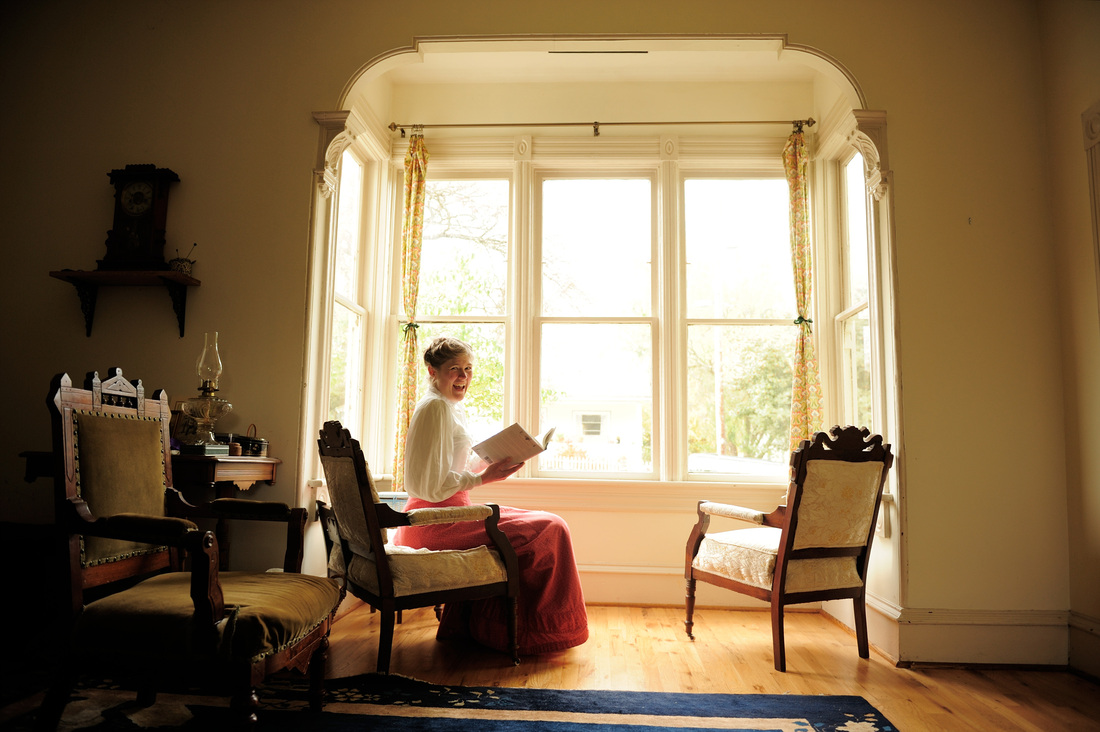
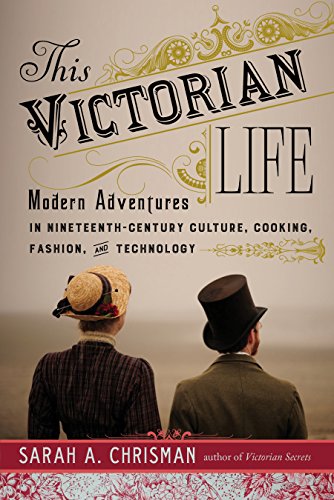
Featured Genealogy Gems Book Club author Sarah Chrisman describes what it’s like when the days get shorter and the darkness comes early?in a house without electricity.
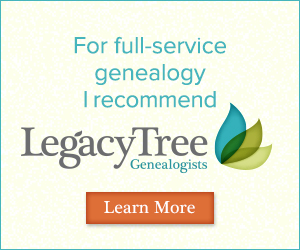 Legacy Tree Genealogists provides expert genealogy research service that works with your research goals, budget and schedule. The Legacy Tree Discovery package offers 3.5 hours of preliminary analysis and research recommendations: a great choice if you’ve hit a brick wall in your research and could use some expert guidance. Click here to learn more.
Legacy Tree Genealogists provides expert genealogy research service that works with your research goals, budget and schedule. The Legacy Tree Discovery package offers 3.5 hours of preliminary analysis and research recommendations: a great choice if you’ve hit a brick wall in your research and could use some expert guidance. Click here to learn more.
GENEALOGY GEMS EXCLUSIVE OFFER: Go to www.legacytree.com/genealogygems and use coupon code SAVE100 with your purchase of research services.
MyHeritage.com is the place to make connections with relatives overseas, particularly with those who may still live in your ancestral homeland. Click here to see what MyHeritage can do for you: it’s free to get started.
DNA WITH DIAHAN SOUTHARD

Parents spend a good portion of their parenting time ferreting out the real story from their children. One time when Henry was in Kindergarten he was playing outside with another little boy. I was in and out of the house watching him and checking on other things. Hours later I noticed that his bike had been spray-painted black. When confronted, he claimed he had no idea how such a thing could have happened. Unfortunately, I jumped to conclusions and blamed the other kid (you have to give me credit, at six Henry was such a good boy and had such an angelic face with his blue blue eyes and blonde blonde hair). But as I was on the phone with my husband telling him about the issue I looked over at Henry and I saw it- that guilty look and my stomach sank, recalling the things I had said to the other boy’s mom. “I’ll have to call you back,” I told my husband.
As genealogists, we spend our time trying to ferret out the real story from our ancestors, or at least from the records they left behind, because they’re not sitting in front of us with guilty looks on their faces. We are constantly checking family stories against, say, the information on a census record, then comparing it to the family will, then making sure it all agrees with what’s in the military records. And even if we have total agreement, which isn’t always, more information often comes along, like in the form of DNA testing, and we may find even more apparent discrepancies.
I recently read an article in the Wall Street Journal about a reporter, Cameron McWhirter, who talks about finding just that kind of discrepancy between his family lore and his DNA. He even goes so far as to say, “I am descended, at least partially, from liars.” And he makes the point that “many immigrants reinvented themselves when they arrived here (the United States),” which could be a nice way of saying they had a chance to INVENT a new legacy, not just reinvent it. His assessments are certainly interesting, and worth reviewing, to help us see how DNA testing can affect the way we look at family stories and traditional research results.
McWhirter may be the classic modern genealogist, never having set foot inside a courthouse or scanned through microfiche, relying instead entirely, he reports, on internet research. Now before you roll your eyes, just stop for a minute and appreciate how exciting this is. Here is a man who never gave his family history a second thought, yet because of the death of his parents started to tinker around a bit, and then due to the large volume of information online “was quickly pulled into the obsessive world of modern genealogical research.” I say, score one for the genealogy world!
What he found was that while his dad was proudly and solidly a self-proclaimed Scot, the records and DNA revealed his heritage was actually from Ireland and eastern Europe. McWhirter says that his “father hated Notre Dame, but judging by my results he could have been one-quarter to one-half Irish. He spoke dismissively of people from Eastern Europe, but part of his genetic code likely came from that region.”
McWhirter’s evaluation of his genetic report includes only his ethnicity results, which as you can hear, were meaningful to him in the way they flew in the face of his father’s prejudices and assertions of his own identity. But the ethnicity results fall short of the point of testing for most genealogists. He might even more powerfully transform his sense of family identity if he took a look at his match list and saw an actual living cousin, for example, a third cousin perhaps who was also descended from his German great-grandmother, who maybe never mentioned that she was also Jewish.
Connecting with other cousins who also have paper trails to our ancestors serves to provide further confidence that we have put all of the pieces together and honored the right ancestor with a spot on our pedigree chart. It’s like we multiply our own research efforts by finding more people like us?literally?who are descended from the same people and interested in finding them. As long as they’re as diligent in their research as we are, of course.
At a recent conference I met a 5th cousin. Even with a connection that distant it was exciting, and it made we want to look again at our connecting ancestors and pause for just a minute to marvel how my DNA verified my paper trail back to them, and that part of them was around, in me, and in my new cousin. To me, THAT’s a bigger picture I want to see?when the paper trail comes together with the DNA trail and turns into real live cousins, even if they turn out to be a little different than the stories and sense of identity that were handed to us when we were young.
Maybe you’re something like Cameron McWhirter: you’ve taken a DNA test, been intrigued (or disappointed) by the ethnicity results, but haven’t yet fully explored all your matches on your list. 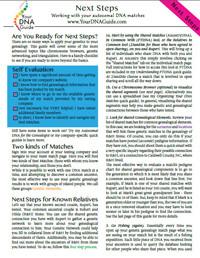 I’m telling you, you may be seriously missing some opportunities. If that’s you, I may actually have written my new DNA quick guide just for you. It’s called “Next Steps: Working with Your Autosomal DNA Matches.” This guide will teach you how to leverage the power of known relatives who have tested. You’ll get an intro to chromosome browsers and their role in the search process, and access to a free bonus template for evaluating the genealogical relationship of a match in relationship to the predicted genetic relationship. This guide also gives you a methodology for converting UNknown relatives on your match list into known relatives, which is what we’re going for here.
I’m telling you, you may be seriously missing some opportunities. If that’s you, I may actually have written my new DNA quick guide just for you. It’s called “Next Steps: Working with Your Autosomal DNA Matches.” This guide will teach you how to leverage the power of known relatives who have tested. You’ll get an intro to chromosome browsers and their role in the search process, and access to a free bonus template for evaluating the genealogical relationship of a match in relationship to the predicted genetic relationship. This guide also gives you a methodology for converting UNknown relatives on your match list into known relatives, which is what we’re going for here.
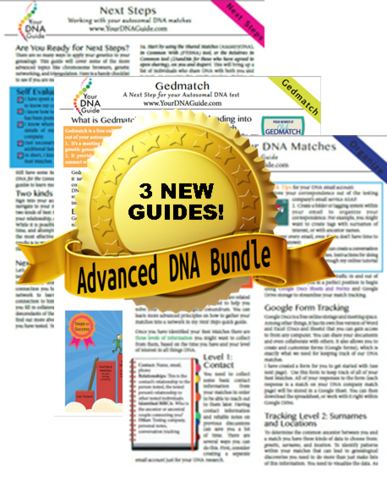 So check it out, either as a solo purchase or as part of my Advanced DNA bundle.
So check it out, either as a solo purchase or as part of my Advanced DNA bundle.
*Update: The Next Steps guide has been replaced with Breaking Down Brick Walls with DNA.
PROFILE AMERICA: Lights Out
PRODUCTION CREDITS
Lisa Louise Cooke, Host and Producer
Sunny Morton, Editor
Amie Tennant, Content Contributor
Vienna Thomas, Audio Editor
Lacey Cooke, Additional Production Support
FREE NEWSLETTER:
Subscribe to the Genealogy Gems newsletter to receive a free weekly e-mail newsletter, with tips, inspiration and money-saving deals.
Disclosure: This article contains affiliate links and Genealogy Gems will be compensated if you make a purchase after clicking on these links (at no additional cost to you). Thank you for supporting Genealogy Gems!

